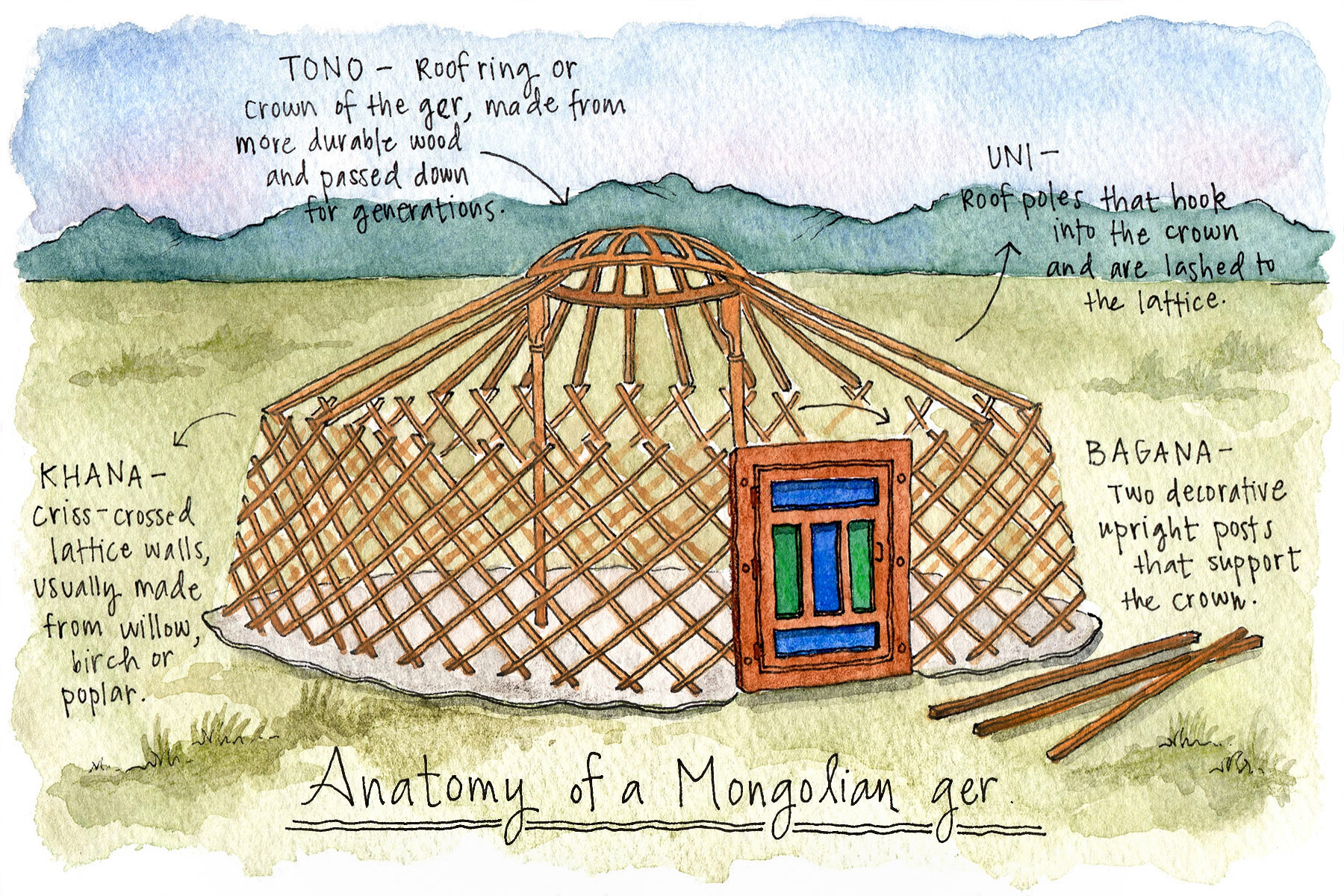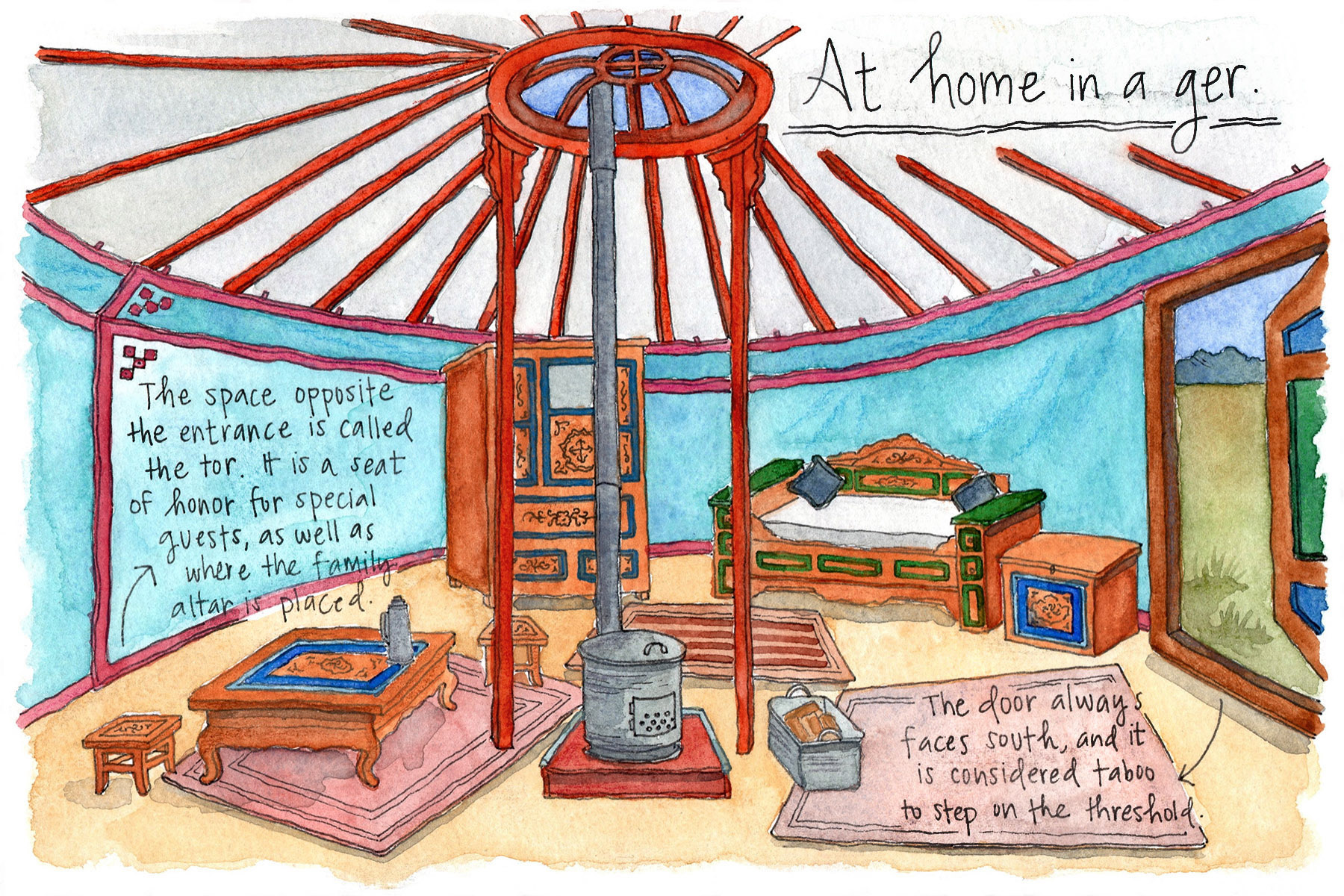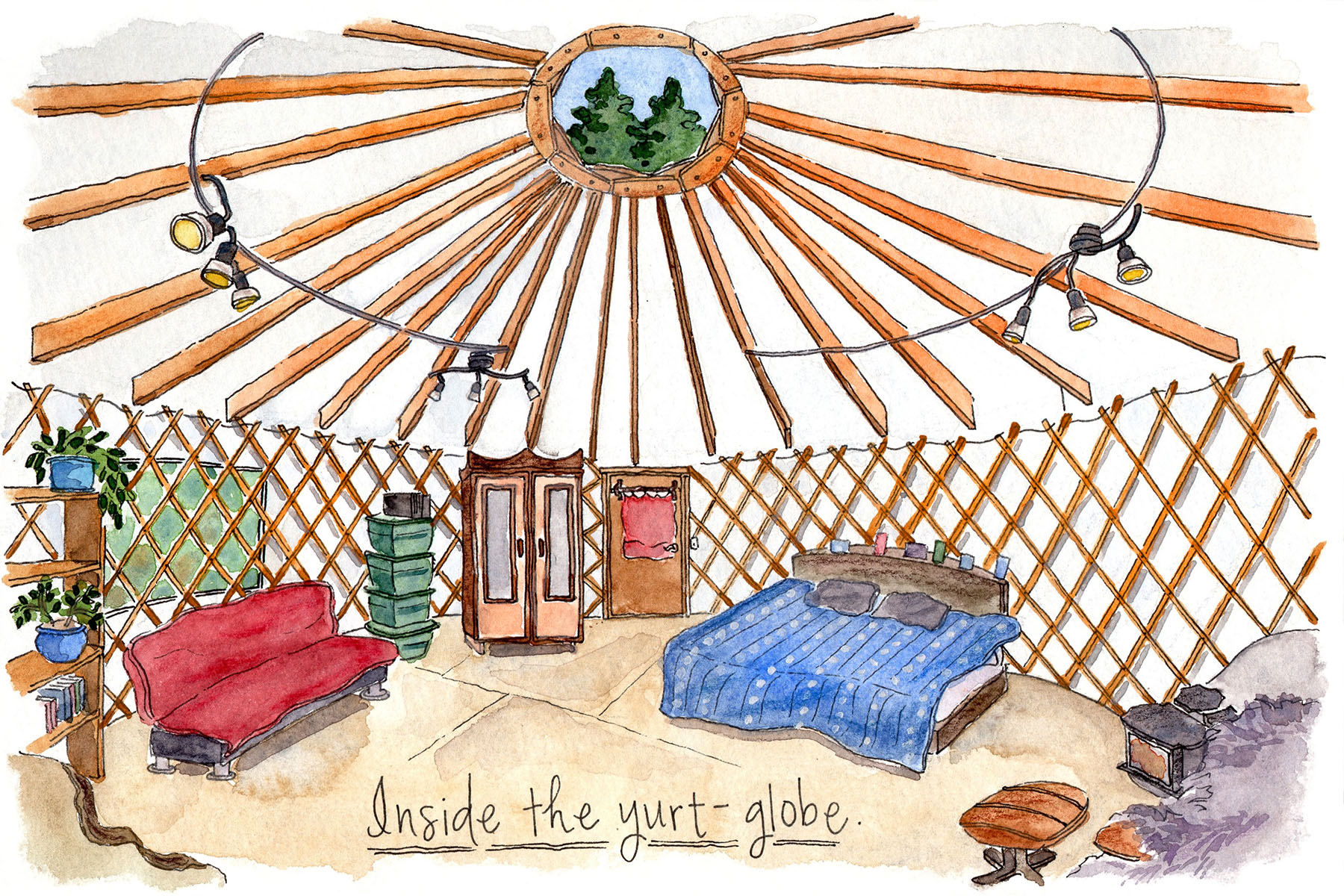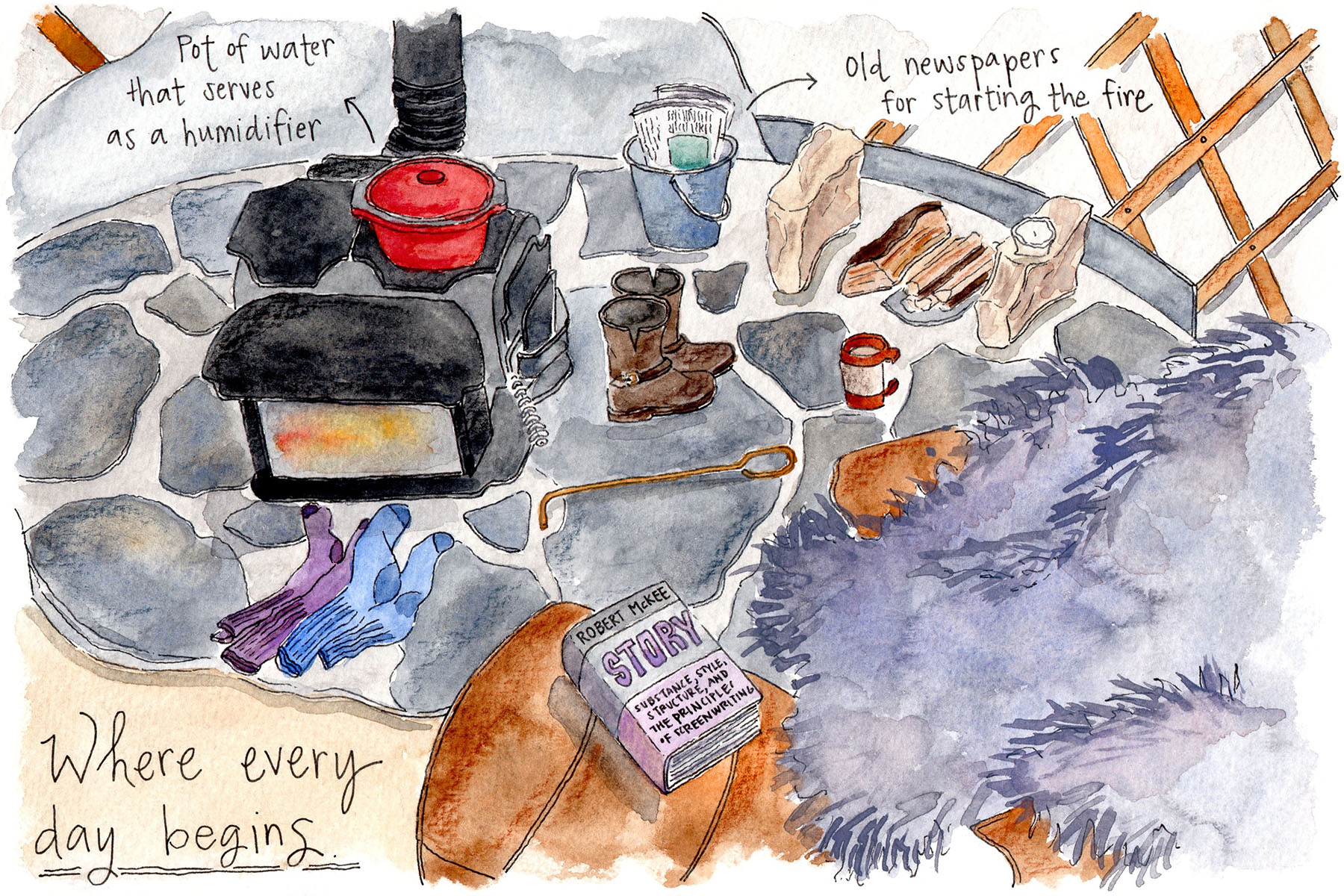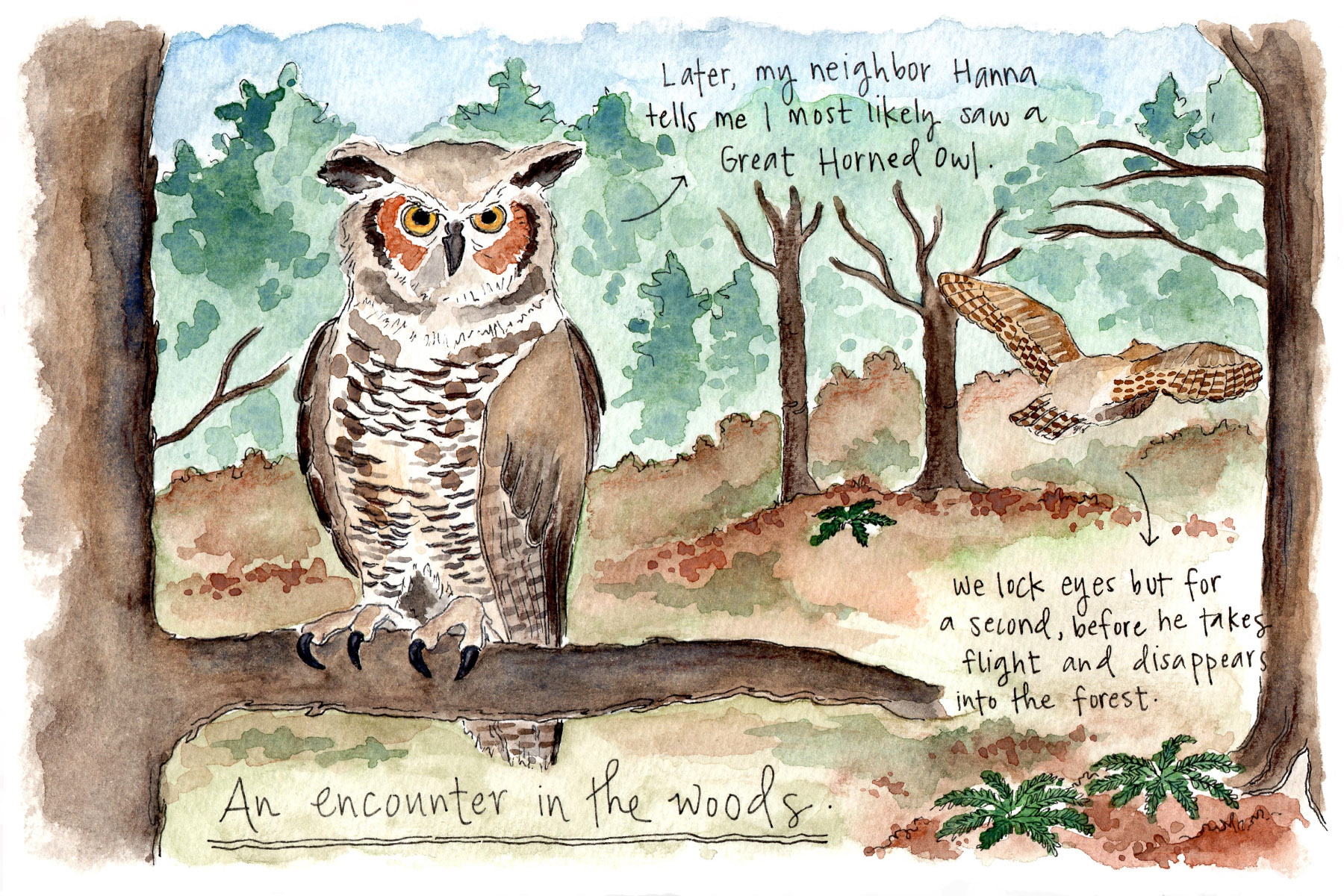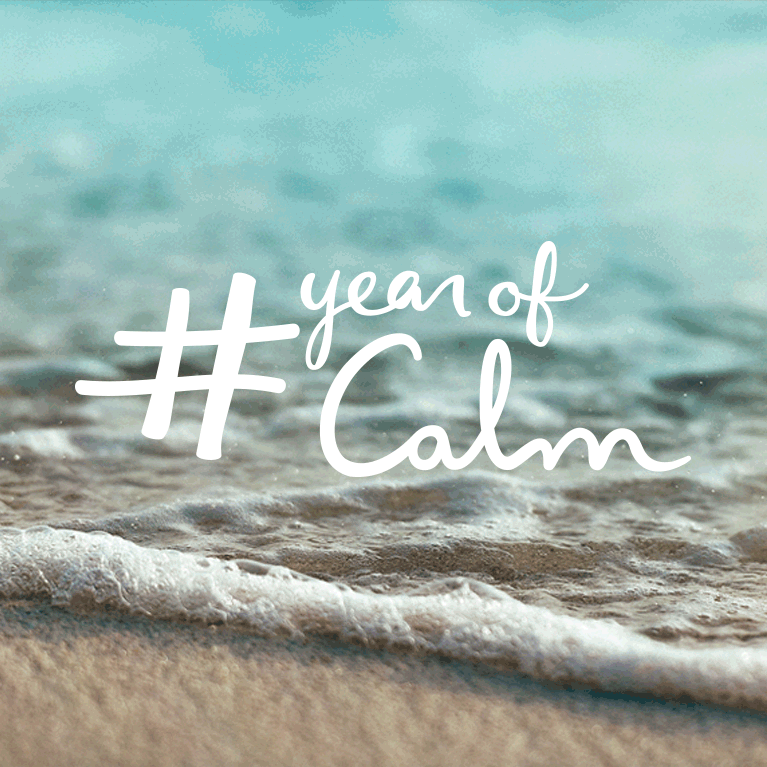The Magic of Yurts
If I had to point to a single place that has had the greatest effect on me in the world, I’d have to point to the three months I spent living in a yurt on a rural island in Canada.
It wasn’t my intention then to live in a yurt specifically; after a year of intense travel and movement, I was simply looking for a place to sublet in the Pacific Northwest for the spring of 2014 — a place to slow down, get my breath back, and for the first time in a long while, not go anywhere.
So perhaps you can imagine my surprise when, during one of my endless scrolls through apartment websites for the Seattle area, I stumbled across a listing for a yurt that was available to rent for three months, on a little place called Salt Spring Island. When I located it on a map, I was even more surprised to find it sitting next to Vancouver Island in the Salish Sea, just across the border from the US in Canada.
A yurt wasn’t exactly what I had in mind — and even the location itself wasn’t where I thought I would end up for the spring — but I immediately sensed that this was what the universe had been leading me to all along.
Maybe you’ve seen photos of a yurt before — or better yet, maybe you’ve been inside one yourself. Pretty magical, right? I happen to think so — and so when I recently had the opportunity to write a new set of Sleep Stories for Calm, one of the first subjects I knew I wanted to write about was the magic of yurts.
Historically, yurts are the traditional homes of nomadic families all across Central Asia, especially in Mongolia (where yurts are known as ger), and they’ve been in use not for centuries, but millennia. They’re easy to set up and take down, which was ideal for a nomadic lifestyle that revolved around shifting locations with the seasons.
During my time on Salt Spring Island, I grew pretty fascinated with reading about and researching the centuries-old history of yurts. I had no idea there was so much symbolism associated with them, especially with the colorfully painted wooden roof ring that forms the crown and center of a Mongol ger.
One article I read described the significance of their roof ring like this: “It is a symbol of home and family and represents an opening up to the world.”
The first time I walked into my yurt, it felt like an entirely new world had just opened up to me, too. For starters, I had never been inside a room that was round. Suddenly, I would get to live in a circle for three months, with all the essentials — bed, desk, and wood-burning stove — set up against the one continuous wall.
The uniqueness of my new round home never ceased to amaze me.
Then there was the incredible sense of awareness and even aliveness I felt inside the yurt, which was something I was excited to focus on in my Sleep Story for Calm. Many of today’s contemporary yurts have canvas walls and a canvas roof, so in reality, there’s really very little separating the world inside the yurt from the world outside.
Natural sounds would flow in and out of the yurt like the spring breeze that was often blowing across the island. During the day, I’d hear the whirring of a hummingbird’s wings as it sipped on the feeder I’d hung near my desk window, while at night I loved listening for the owls that always called from the forest.
Once, on an evening walk to the coast, I even glimpsed a regal Great Horned Owl in the woods before he took flight and flew off.
But if there’s one thing that defined my experience in the yurt, and was the greatest source of the lessons I learned there, it was the gorgeous cast-iron, wood-burning stove that was positioned just to the right of my front door.
Because my dear yurt’s canvas walls didn’t just let in the peaceful soundtrack of nature around me — they let the brisk spring chill right on in as well. If I wanted the yurt to be warm, I had no choice but to jump out of bed every morning, brave the cold outside, chop up some fragrant cedar kindling, and keep a fire going throughout the day.
I loved feeling my days be filled with such essential activities — and I loved the deeper sense of awareness that came with them as well. Here’s how I wrote about it in my journal, on only my second day in the yurt:
“I can move countries, I can drive across India in a rickshaw, I can walk a pilgrimage in Japan — but can I start a fire? Can I exist on a basic, almost primeval level? There’s an awareness here I love…and already I know I will miss it. That I must start my day with building the fire, if I want to stay warm. And that I must tend the fire, remember to bring in wood, look for the orange glow through the stove’s front window, and listen for the hints of life from inside. I cannot merely go through the motions here.”
My cozy yurt and its wood-burning stove taught me what it looks like to live every day with intention and purpose — and even though it’s now been more than four years since I said goodbye to the yurt, the memories of my time there still challenge me to stay aware and alive to the world around me, no matter where I’m calling home at the time.





